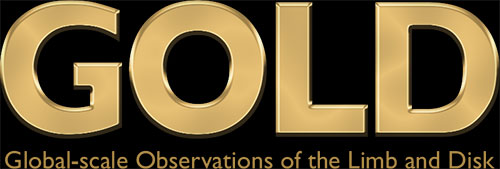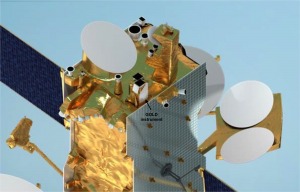GOLD is a NASA mission of opportunity that fills a critical gap in our knowledge of Sun-Earth connections. We will examine the response of the upper atmosphere to forcing from the Sun, the magnetosphere, and the lower atmosphere.

The GOLD mission is focused on the response of the Earth’s thermosphere and ionosphere to forcing from above and below. Understanding this forcing is one of the most prominent problems for research in the Earth’s space environment. (Courtesy GOLD)
GOLD will:
- Provide unprecedented imaging of the Earth’s upper atmosphere from geostationary orbit
- Be the first mission to study the weather of the thermosphere-ionosphere rather than its climate
- Make breakthrough measurements of temperature and composition that are important for satellite drag, and ionospheric disruptions of communication and navigation
- Fly as a hosted payload on a commercial communications satellite pioneering NASA’s cost-effective access to geostationary orbit
Mission Overview
- High-resolution far-ultraviolet imaging spectrograph with two identical channels
- Global-scale imaging and limb scans, with a 30-minute cadence
- Host spacecraft is a commercial communications satellite
- Launched on January 25, 2018; Two-year nominal mission at geostationary orbit; extended mission possible
- State-of-the-art space weather models will be used in data analysis
Science Objectives
- Determine how geomagnetic storms alter the temperature and composition of Earth’s thermosphere
- Analyze the global-scale response of the thermosphere to solar extreme-ultraviolet variability
- Investigate the significance of atmospheric waves and tides propagating from below on the temperature structure of the thermosphere
- Resolve how the structure of the equatorial ionosphere influences the formation and evolution of equatorial plasma density
irregularities


